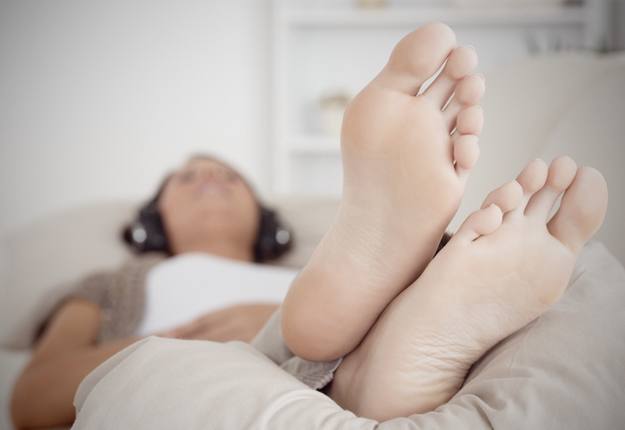Swollen legs and feet are an uncomfortable and common pregnancy symptom for many women.
Oedema (the medical term for swelling) often appears in the later months of pregnancy and can occur for several reasons. Namely, during pregnancy you naturally produce and store more fluid in your body. Plus, as your baby grows, the enlarged uterus puts pressure on everything around it, included veins that pump blood back to your heart. As a result, puffiness and swelling in your lower limbs can, and often does, occur.
In some cases, swelling may indicate a more serious condition and should be assessed immediately. Signs that you should seek further assistance include: sudden or severe swelling, pain and tenderness (especially radiating up your calf and /or into your groin), swelling that doesn’t go down after rest or that mostly occurs in your face and hands.
‘Healthy’ swelling tends to be mild, coming on at the end of the day or after spending a lot of time on your feet, and occurs mostly in the feet and ankles.
Even though this isn’t a serious health condition it can still be very uncomfortable. Happily, there are a number of simple things you can do that can help manage swollen feet while pregnant.
Elevate your feet
Putting your feet up at the end of the day, or during if you can, will take the pressure off your feet and help with circulation. If you’re heavily pregnant, put a small pillow or rolled up towel underneath your right hip so that you lean more towards your left – this improves circulation by taking the pressure off the inferior vena cava, the large vein that returns blood to your heart from the lower half of your body.
Supportive footwear
This is particularly important if you are on your feet a lot during the day. Compression socks or stockings may also be appropriate, as these will help to prevent blood pooling around the ankles.
Regular exercise
Moving your body daily will help to improve circulation and reduce swelling – this can include yoga, swimming and walking.
Soak your feet
Fill a bucket or foot bath with enough water to cover your feet, up to your ankles. In this water, dissolve ½ – 1 cup Epsom salts and let your feet soak for up to 15 minutes. Even better for your circulation: take your feet out every 3-5 minutes and dunk them in cold water, before returning to the warm bath.
Massage
Having someone massage your feet and ankles is not only a wonderful luxury, it’s also highly therapeutic. Ensure they use upward strokes, towards your knees, as this will help to move fluid away from the feet. This is also something you can do for yourself… but much more pleasant if you can convince a partner or friend to do it for you!
Herbal tea
Infusions made from Nettle and Dandelion leaves can be drunk throughout the day (ideally, 1-2 cups) to help with circulation, improve kidney function and fluid balance. You may also be recommended a medicinal extract of these herbs, amongst others, to help with oedema – however, before taking any herbal medicine during pregnancy, it is important to discuss this with a qualified practitioner.
Eat well and stay hydrated
Keep your diet as clean as possible, full of fresh fruit and vegetables, regular serves of protein and plenty of water. You don’t have to avoid salt when your feet and ankles are sometimes swollen – quite the opposite in fact, as salt is an important mineral for fluid balance and insufficient amounts in your diet may contribute to oedema. However, you should steer clear of processed and highly sugared foods, as these have no health benefits and may exacerbate symptoms such as inflammation and swelling.






















1:41 am
9:48 pm
9:45 am
4:50 am
3:14 pm
1:59 am
9:25 pm
4:00 pm
8:52 am
12:21 pm
7:12 pm
10:55 pm
3:39 pm
12:06 am
12:11 am
6:46 pm
9:36 pm
8:19 pm
4:42 am
8:55 am
- 1
- 2
- …
- 4
- »
Post a commentTo post a review/comment please join us or login so we can allocate your points.